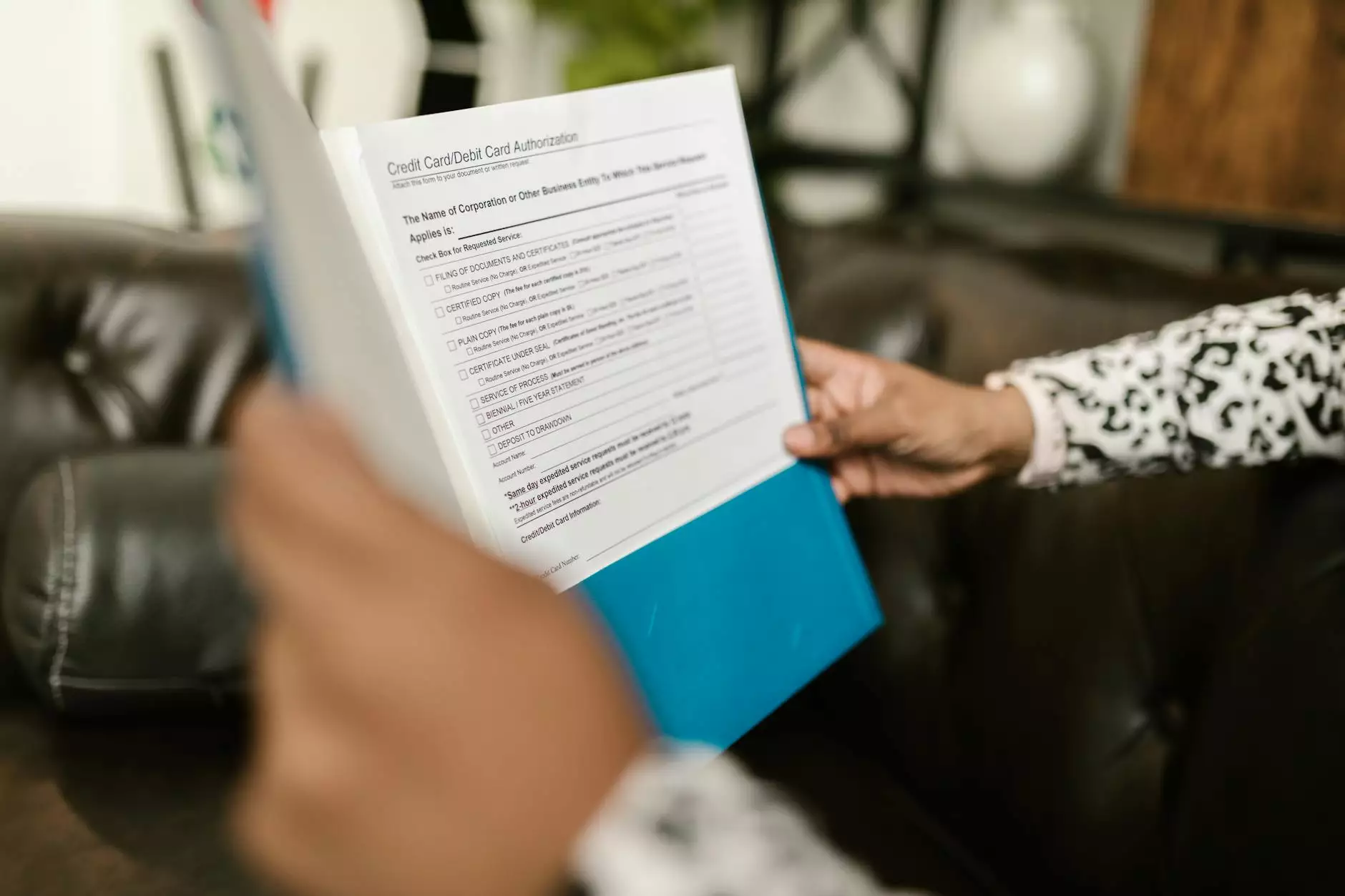How to Set up a Tax Debt Repayment Plan With the IRS
Financials & Reports
Welcome to Social Service of America, your trusted resource for community and society matters in the field of philanthropy. In this guide, we will walk you through the process of setting up a tax debt repayment plan with the Internal Revenue Service (IRS) in detail. Our goal is to provide you with comprehensive information and strategies to effectively manage and address your tax debt obligations.
Understanding Tax Debt and the Importance of Repayment
Before delving into the specifics, it's crucial to understand the significance of addressing tax debt and the potential consequences of non-payment. Tax debt occurs when individuals or businesses owe money to the IRS due to unpaid taxes, typically arising from a variety of factors like underreported income, errors in tax calculations, or unfiled tax returns. Failing to address tax debt can result in penalties, interest charges, wage garnishments, asset seizures, and even legal action.
Knowing the gravity of the situation, it's essential to take proactive steps to set up a tax debt repayment plan with the IRS, which will help you regain control over your financial situation and avoid further complications.
Evaluating Your Tax Debt and Financial Situation
Before proceeding, it's crucial to have a clear picture of your tax debt and the current state of your finances. Start by gathering all relevant documents, such as past tax returns, notices from the IRS, and any related financial statements. Organize this information in a systematic manner, as it will be crucial throughout the repayment process.
Next, assess your overall financial situation, including your income, expenses, assets, and liabilities. Understanding your financial standing will allow you to develop a realistic and sustainable repayment plan.
Exploring Available Debt Repayment Options
The IRS provides several debt repayment options, and it's essential to evaluate each one to determine which best suits your unique financial circumstances.
1. Installment Agreement
An installment agreement allows you to pay off your tax debt over time through fixed monthly payments. This option is beneficial for those who can't afford to pay their tax debt in full immediately. To apply for an installment agreement, you'll need to submit Form 9465, Installment Agreement Request, to the IRS along with any required financial information.
2. Offer in Compromise
The Offer in Compromise (OIC) program allows qualified taxpayers to settle their tax debt for less than the full amount owed. To be eligible, applicants must meet specific criteria and demonstrate their inability to pay the debt in full. The OIC application process can be complex, and it's advisable to seek professional assistance or utilize resources from reputable organizations like Social Service of America.
3. Currently Not Collectible (CNC) Status
If you're facing significant financial hardship and are unable to make any payments towards your tax debt, you may qualify for a Currently Not Collectible (CNC) status. This temporary reprieve suspends IRS collection activities until your financial situation improves.
4. Partial Payment Installment Agreement (PPIA)
A Partial Payment Installment Agreement (PPIA) allows taxpayers to pay off their tax debt in monthly installments, but at a reduced amount. To qualify for a PPIA, you must prove to the IRS that your financial situation prevents you from paying the full amount owed.
Remember, each repayment option has its eligibility requirements and implications. It's crucial to carefully assess your situation and seek professional advice, if needed, to determine the best course of action for your specific circumstances.
Negotiating with the IRS and Setting up the Repayment Plan
Once you have chosen the most suitable repayment option, it's important to initiate contact with the IRS and communicate your intentions. This can be done through phone calls, mail, or even through the IRS website's online services.
When negotiating with the IRS, it's vital to be honest, transparent, and responsive. Provide accurate and comprehensive financial information, supporting your ability to meet the repayment terms. The IRS may request additional documentation to verify your financial situation.
If you face challenges during the negotiation process or require clarification on specific terms, it's recommended to seek guidance from professional tax advisors or organizations specializing in tax debts, such as Social Service of America.
Maintaining Compliance and Staying on Track
After successfully setting up a tax debt repayment plan with the IRS, it's crucial to prioritize timely payment of your agreed-upon installments. Failure to meet the repayment obligations may result in penalties and jeopardize the terms of the agreement.
Along with regular payments, make sure to file all future tax returns accurately and promptly. Staying compliant with your tax obligations is essential to avoid further accumulation of tax debt or potential legal repercussions.
Utilize Resources and Expert Assistance
Setting up a tax debt repayment plan with the IRS can be a complex and challenging process. It's imperative to leverage available resources and seek expert assistance to ensure you navigate through the process successfully.
At Social Service of America, we understand the intricacies of tax debt repayment and are dedicated to helping individuals resolve their financial burdens. Our website provides detailed guides, informative articles, and access to professional advisors who specialize in tax-related matters.
We encourage you to explore our website to access comprehensive resources that will equip you with the necessary knowledge and tools to address your tax debt with confidence.
Conclusion
In conclusion, setting up a tax debt repayment plan with the IRS requires careful evaluation of your financial situation, exploring available options, negotiating with the IRS, and maintaining compliance with the agreed-upon terms. Prioritizing timely payment and seeking assistance from reputable organizations like Social Service of America are crucial steps towards effectively managing your tax debt.
We hope this guide has provided you with valuable insights and strategies to tackle your tax debt efficiently. Remember, resolving tax debt is a process that requires diligence and patience. By taking proactive steps and utilizing the resources available, you can regain your financial stability and peace of mind.










